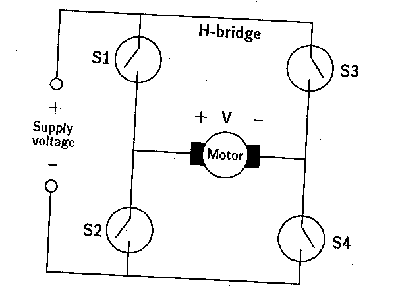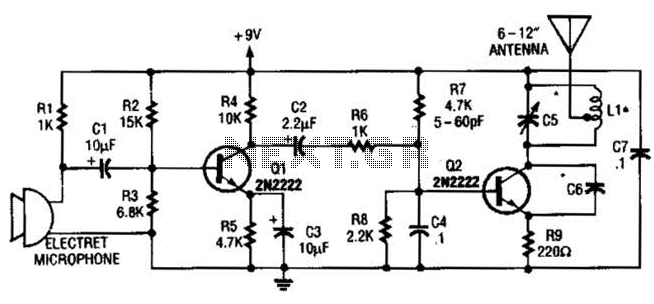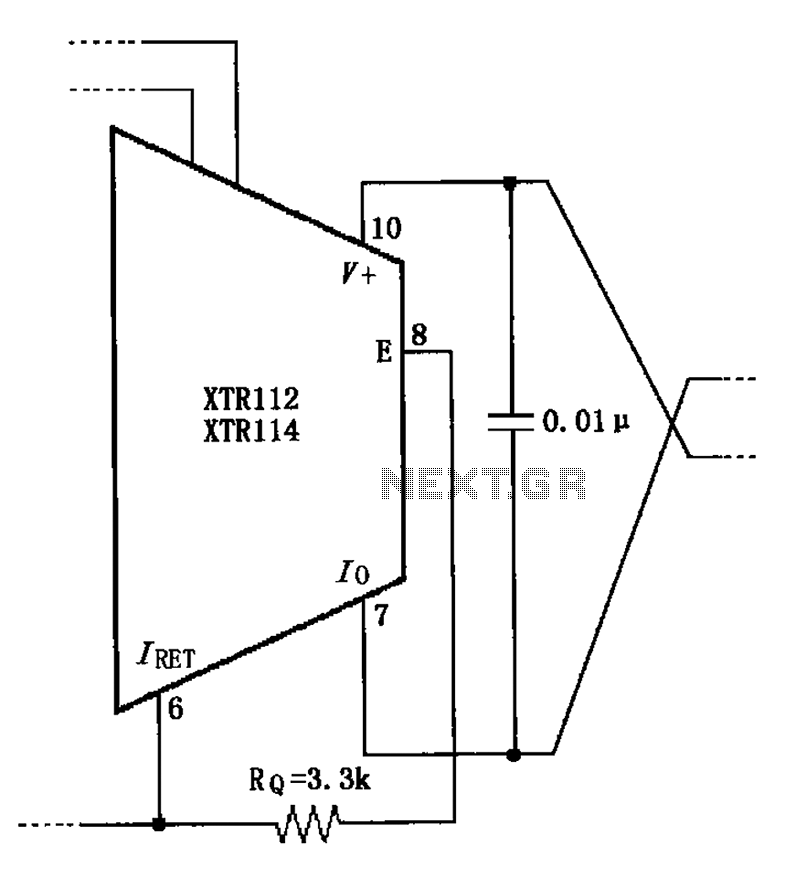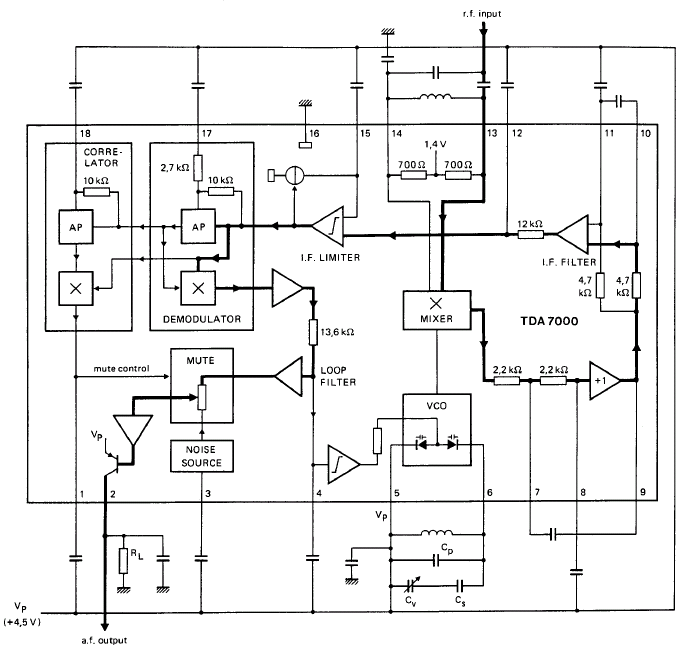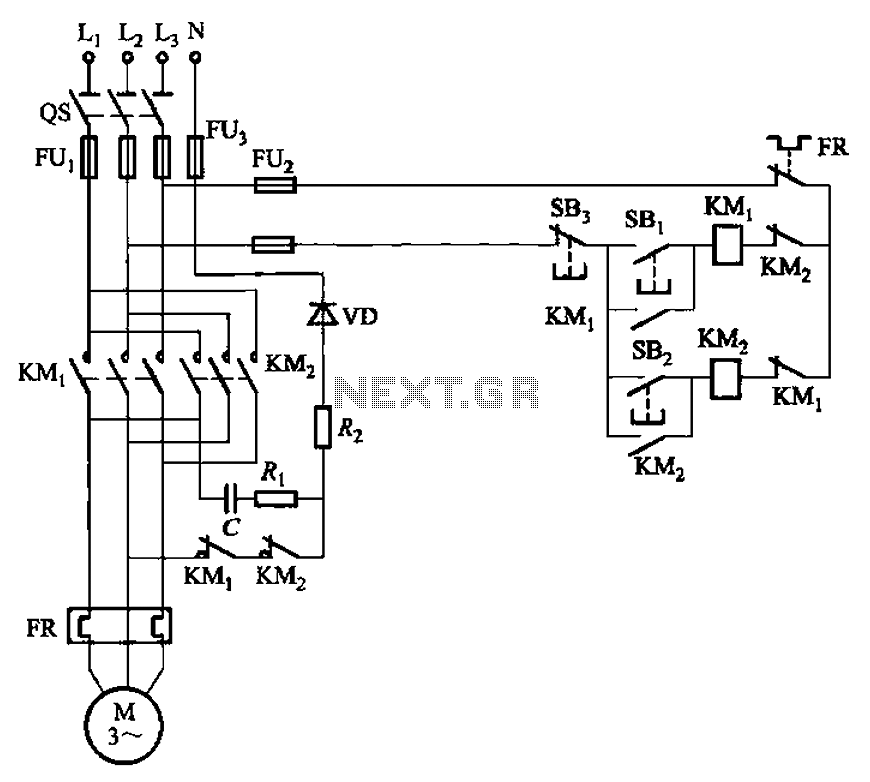
Ultra Fast Battery charger circuit Schematic Diagram
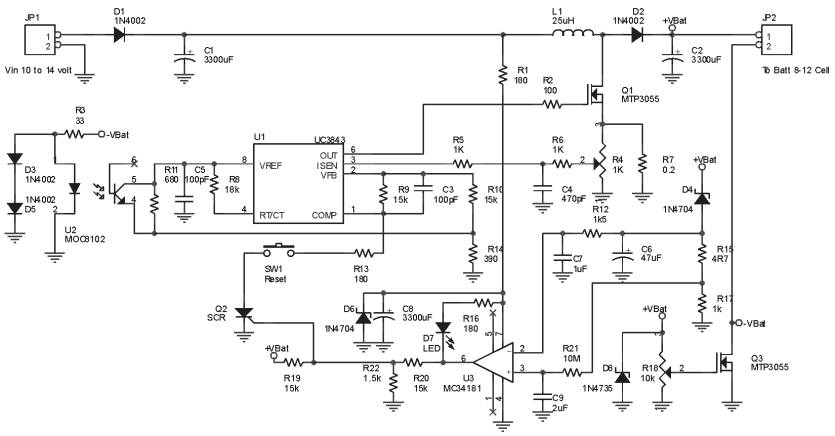
The Ultra Fast Battery Charger for Nickel-Cadmium (NiCad) battery cells is designed to efficiently charge NiCad batteries. This charger, referred to as the Ultra Fast NiCad Battery Charger, is capable of rapidly filling NiCad battery cells. The charger is equipped with features to protect both the battery and the charger circuit itself. It includes short circuit protection, which prevents damage to the charger and other components in the event of a short circuit caused by the battery or the charger circuit. The schematic provided illustrates the design of the Ultra Fast Battery Charger for NiCad battery cells, which can simultaneously charge 8 to 10 NiCad batteries with a 12-volt output and a maximum current of 3.5 A. Key components of the circuit include the UC3843, a voltage regulator, and the MC34181, a JFET operational amplifier characterized by low offset voltage and high input impedance. The MC34181 functions as a voltage comparator.
The Ultra Fast Battery Charger for Nickel-Cadmium (NiCad) battery cells is engineered to deliver rapid charging capabilities, making it suitable for applications requiring quick turnaround times for battery readiness. The design allows for charging up to ten NiCad batteries concurrently, which is beneficial in scenarios where multiple batteries are utilized, such as in power tools or electronic devices.
The UC3843 integrated circuit serves as the heart of the charger, functioning primarily as a voltage regulator. It ensures that the output voltage remains stable at 12 volts, which is crucial for the safe and efficient charging of NiCad batteries. This chip is designed to operate with high efficiency, minimizing energy losses during the charging process.
In addition to the UC3843, the MC34181 operational amplifier plays a critical role in monitoring and controlling the charging process. Its low offset voltage and high input impedance characteristics make it an ideal choice for applications where precision is required. The MC34181 acts as a voltage comparator, allowing the charger to accurately assess the battery voltage and adjust the charging current accordingly. This feature not only optimizes charging times but also enhances the longevity of the batteries by preventing overcharging.
The inclusion of short circuit protection is a vital safety feature of the charger. In the event of a short circuit, this protection mechanism ensures that the charger and its components remain unharmed, thereby extending the overall lifespan of the device. This is particularly important in battery charging applications, where the risk of short circuits can be prevalent.
Overall, the Ultra Fast Battery Charger for NiCad batteries is a sophisticated device that combines rapid charging capabilities with essential safety features, making it a reliable choice for users who require efficient battery management solutions. The schematic representation of the circuit provides a clear understanding of the interconnections and functionalities of the components involved, facilitating easier troubleshooting and modifications in future designs.Ultra Fast Battery Chager for Nickel-Cadmium battery cells [NiCad] which will be discussed in this article is Fast NiCad Battery Charger, called the Ultra Fast Charger Battery Charger NiCad because it can make filling fast NiCad Batteries Cell. A battery charger in Desai has a fast charging capabilities such as Ultra Fast Battery Chager for Nickel
-Cadmium battery cells [NiCad] on this article shall be equipped with some ability to protect the battery and charger circuit itself. Short Circuit Protection, with the existence of this protection circuit so if there is short-circuit caused by a battery and a charger circuit itself will not damage the other parts are not damaged.
Image series above is a series of schematic drawings for Ultra Fast Battery Chager for Nickel-Cadmium battery cells [NiCad]. Ultra Fast Battery Chager for Nickel-Cadmium battery cells [NiCad] can be used for 8 to 10 NiCad batteries at once with 12 volt output voltage and max current is 3.
5 A. The main components in the circuit of Ultra Fast Battery Chager for Nickel-Cadmium battery cells [NiCad] is UC3843 and MC34181. UC3843 chip is a voltage regulator and M34181 is a JFET OpAmp with characteristic low offset voltage, input impedance is very high.
MC34181 serves as a voltage comparator. You are reading the Circuits of Ultra Fast Battery charger circuit And this circuit permalink url it is 🔗 External reference
The Ultra Fast Battery Charger for Nickel-Cadmium (NiCad) battery cells is engineered to deliver rapid charging capabilities, making it suitable for applications requiring quick turnaround times for battery readiness. The design allows for charging up to ten NiCad batteries concurrently, which is beneficial in scenarios where multiple batteries are utilized, such as in power tools or electronic devices.
The UC3843 integrated circuit serves as the heart of the charger, functioning primarily as a voltage regulator. It ensures that the output voltage remains stable at 12 volts, which is crucial for the safe and efficient charging of NiCad batteries. This chip is designed to operate with high efficiency, minimizing energy losses during the charging process.
In addition to the UC3843, the MC34181 operational amplifier plays a critical role in monitoring and controlling the charging process. Its low offset voltage and high input impedance characteristics make it an ideal choice for applications where precision is required. The MC34181 acts as a voltage comparator, allowing the charger to accurately assess the battery voltage and adjust the charging current accordingly. This feature not only optimizes charging times but also enhances the longevity of the batteries by preventing overcharging.
The inclusion of short circuit protection is a vital safety feature of the charger. In the event of a short circuit, this protection mechanism ensures that the charger and its components remain unharmed, thereby extending the overall lifespan of the device. This is particularly important in battery charging applications, where the risk of short circuits can be prevalent.
Overall, the Ultra Fast Battery Charger for NiCad batteries is a sophisticated device that combines rapid charging capabilities with essential safety features, making it a reliable choice for users who require efficient battery management solutions. The schematic representation of the circuit provides a clear understanding of the interconnections and functionalities of the components involved, facilitating easier troubleshooting and modifications in future designs.Ultra Fast Battery Chager for Nickel-Cadmium battery cells [NiCad] which will be discussed in this article is Fast NiCad Battery Charger, called the Ultra Fast Charger Battery Charger NiCad because it can make filling fast NiCad Batteries Cell. A battery charger in Desai has a fast charging capabilities such as Ultra Fast Battery Chager for Nickel
-Cadmium battery cells [NiCad] on this article shall be equipped with some ability to protect the battery and charger circuit itself. Short Circuit Protection, with the existence of this protection circuit so if there is short-circuit caused by a battery and a charger circuit itself will not damage the other parts are not damaged.
Image series above is a series of schematic drawings for Ultra Fast Battery Chager for Nickel-Cadmium battery cells [NiCad]. Ultra Fast Battery Chager for Nickel-Cadmium battery cells [NiCad] can be used for 8 to 10 NiCad batteries at once with 12 volt output voltage and max current is 3.
5 A. The main components in the circuit of Ultra Fast Battery Chager for Nickel-Cadmium battery cells [NiCad] is UC3843 and MC34181. UC3843 chip is a voltage regulator and M34181 is a JFET OpAmp with characteristic low offset voltage, input impedance is very high.
MC34181 serves as a voltage comparator. You are reading the Circuits of Ultra Fast Battery charger circuit And this circuit permalink url it is 🔗 External reference
